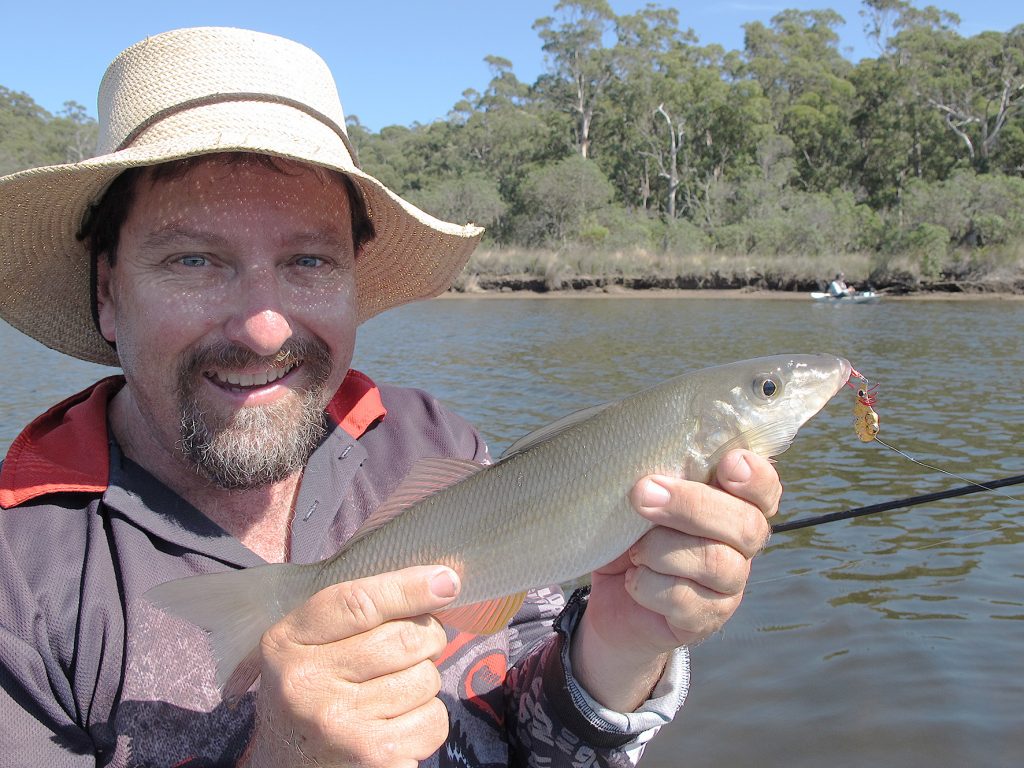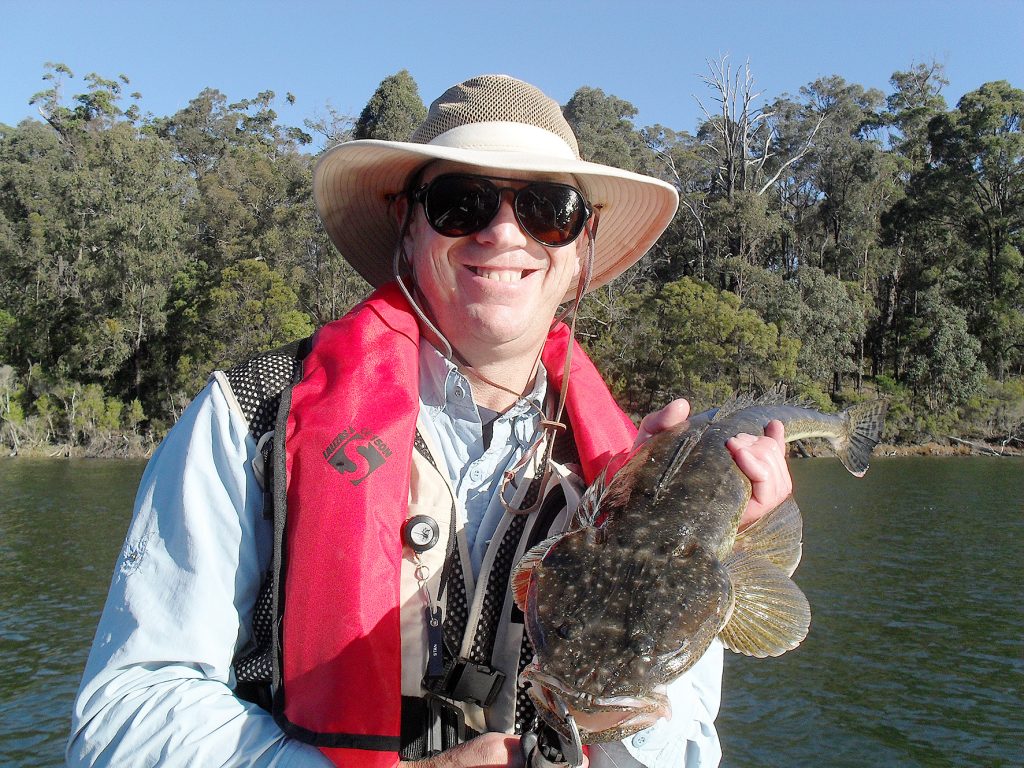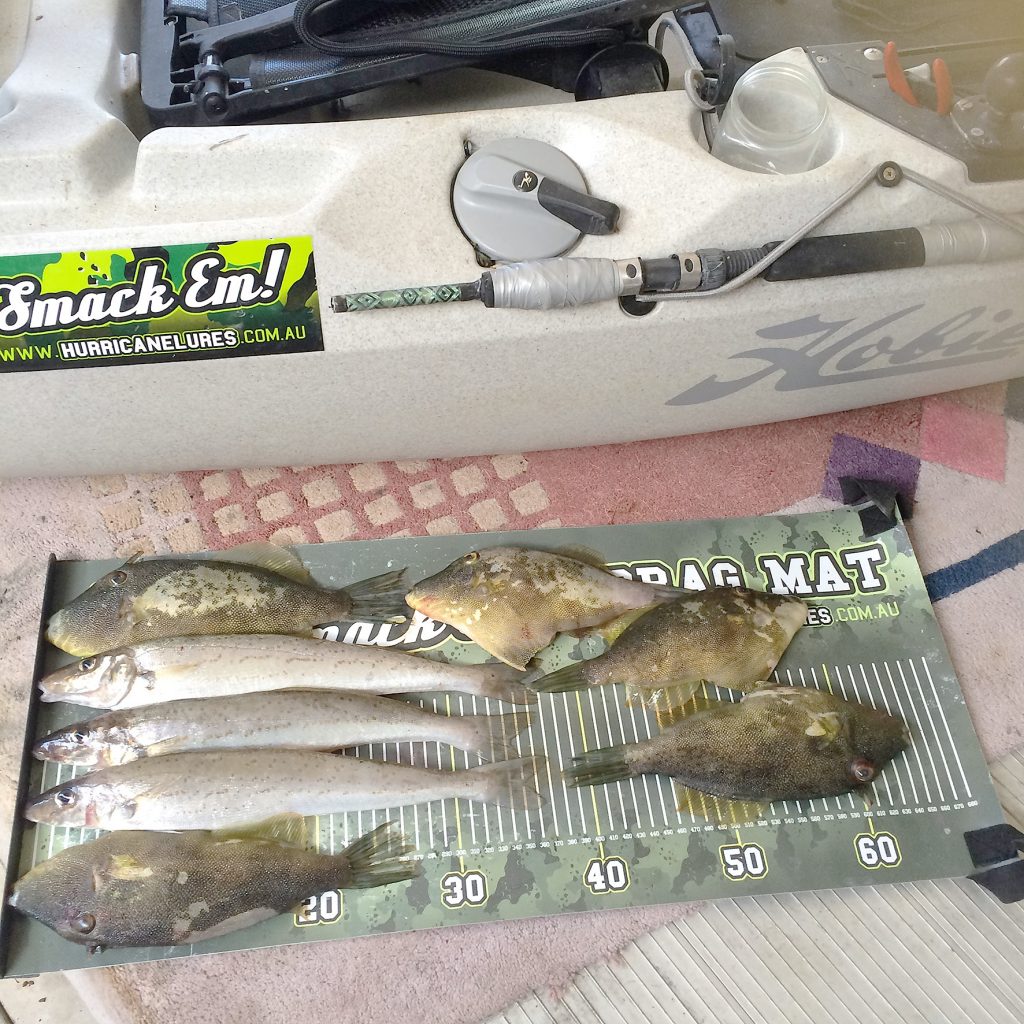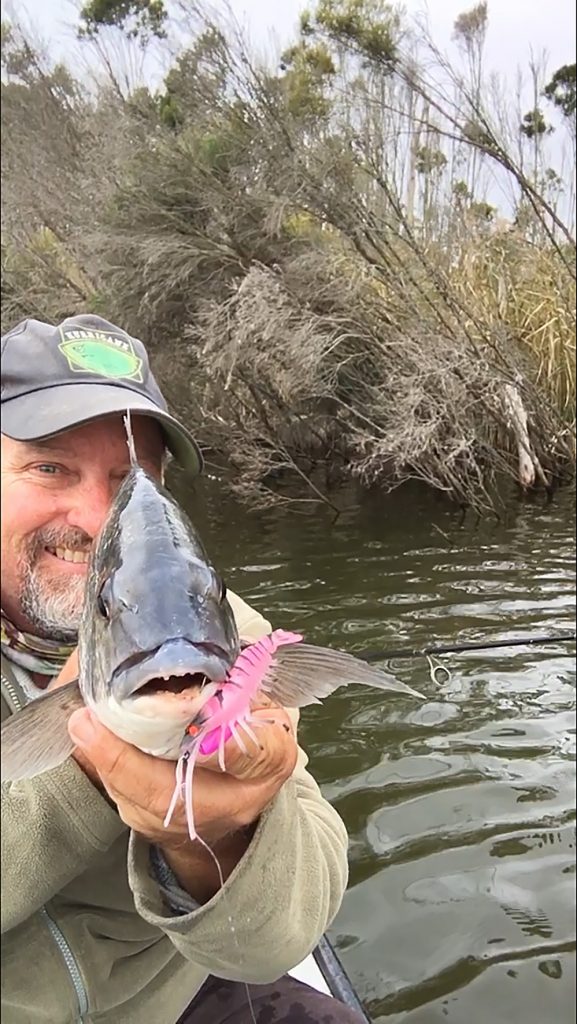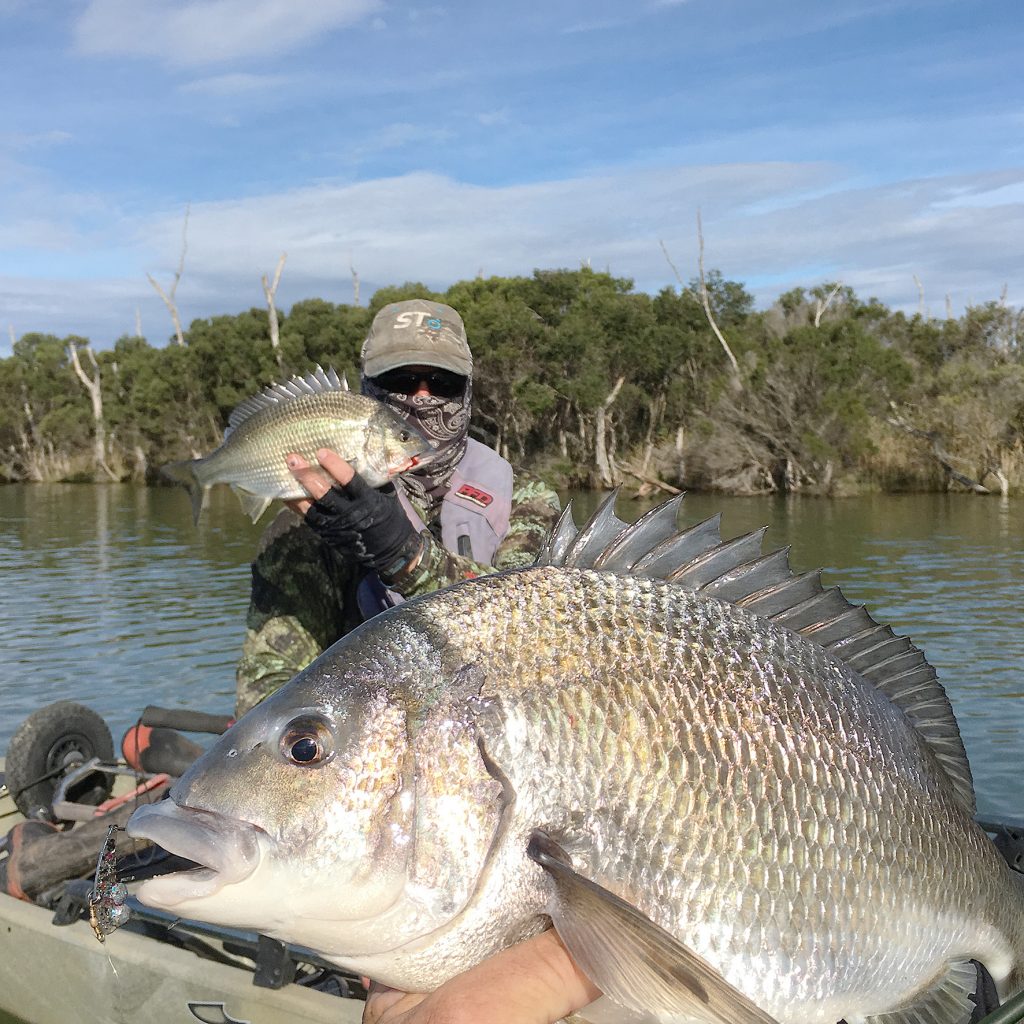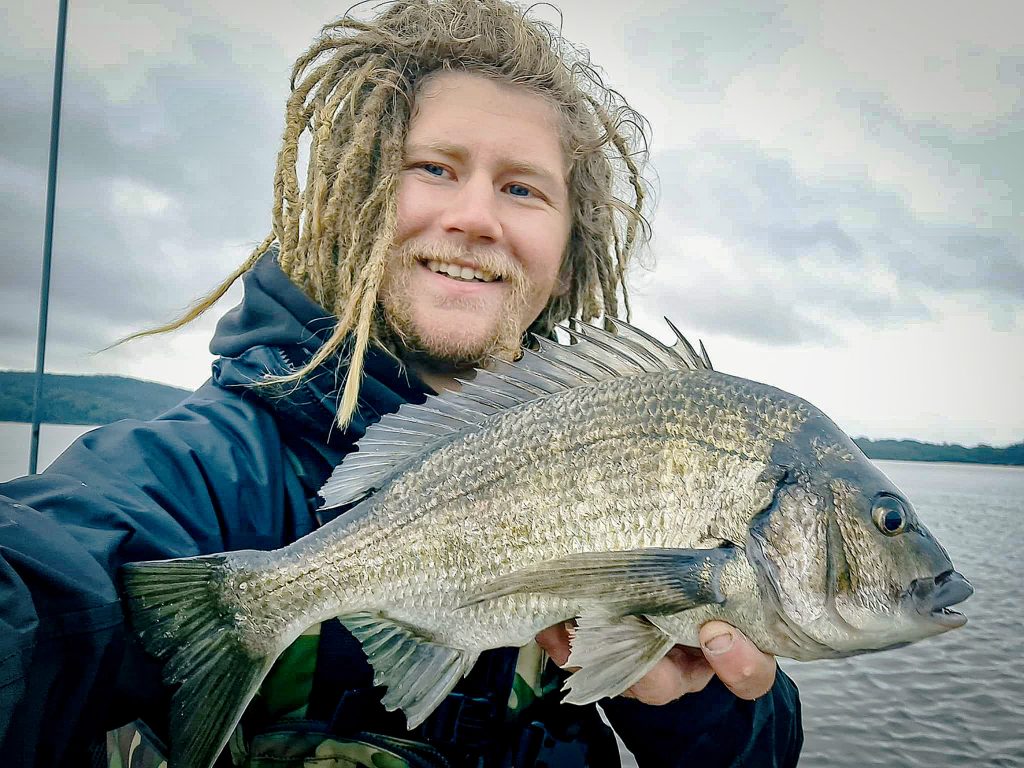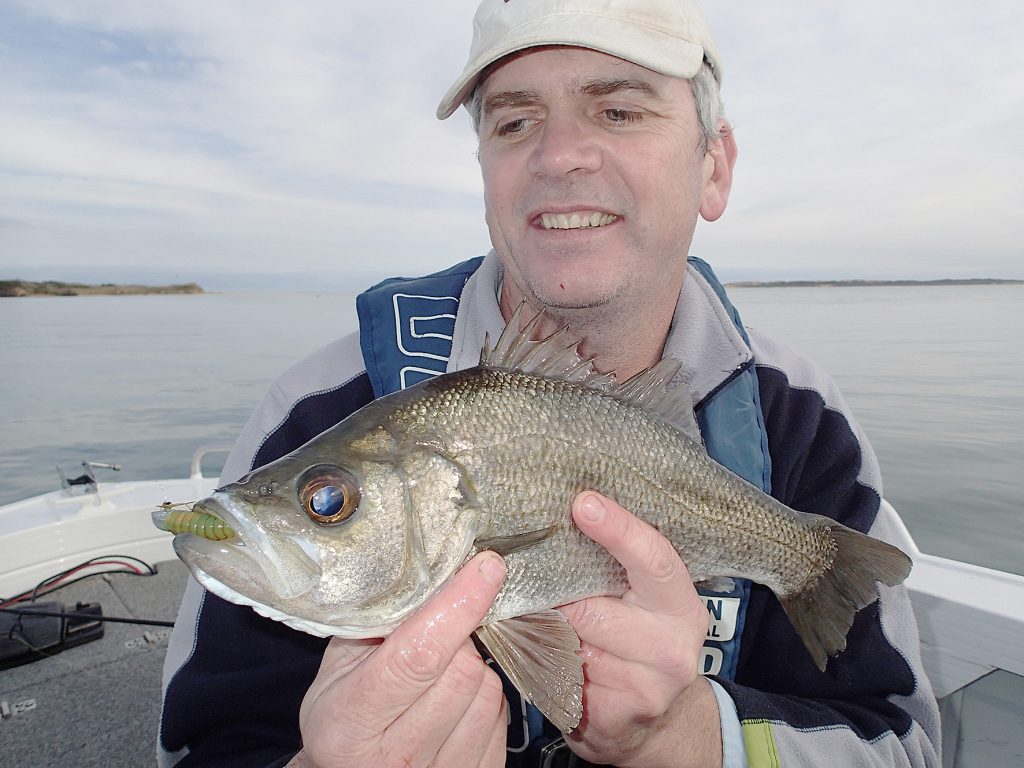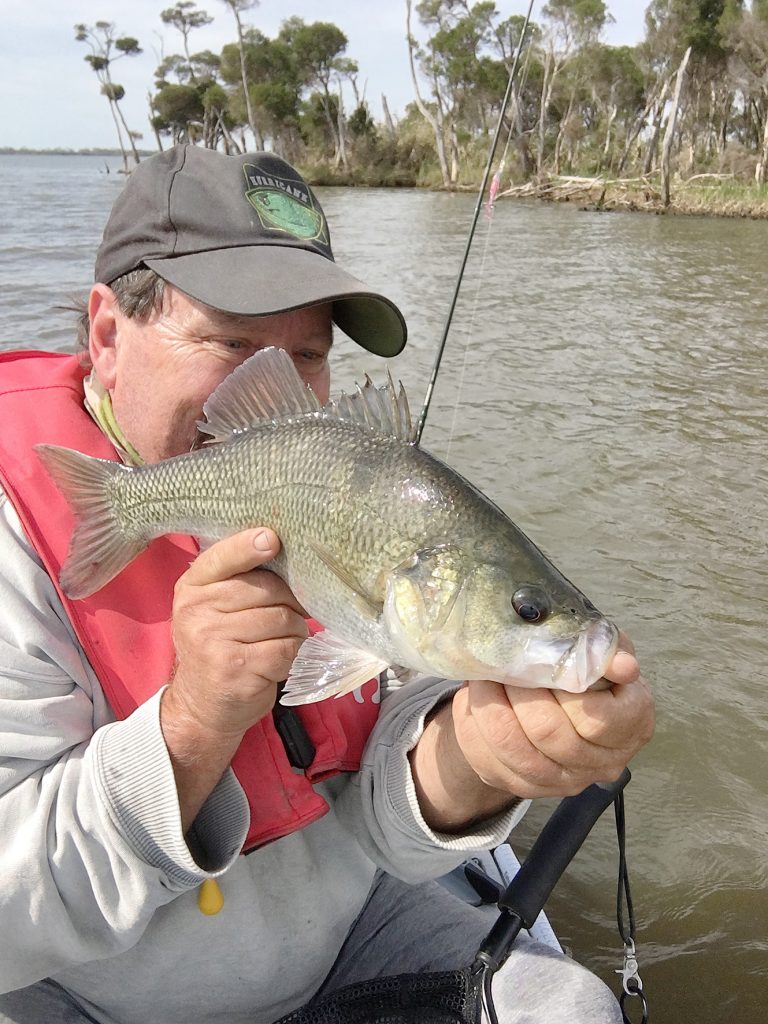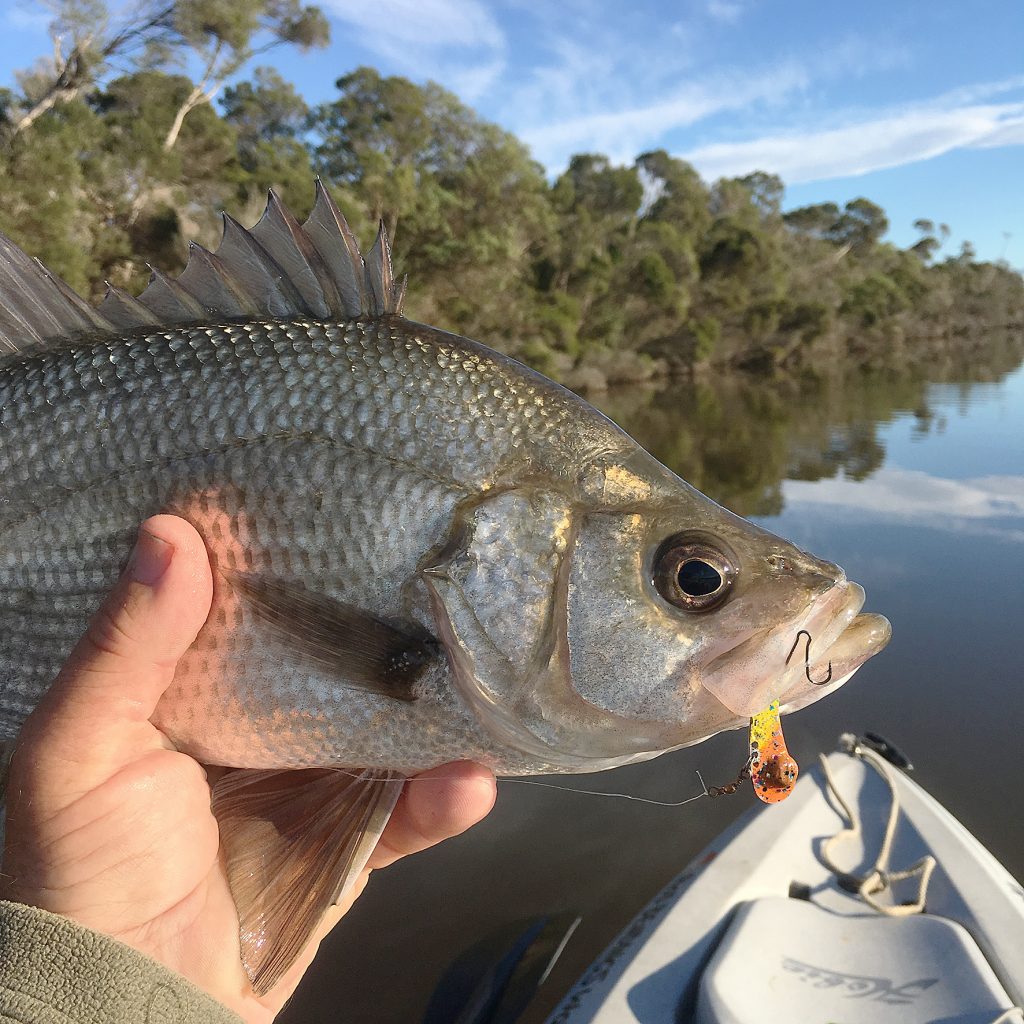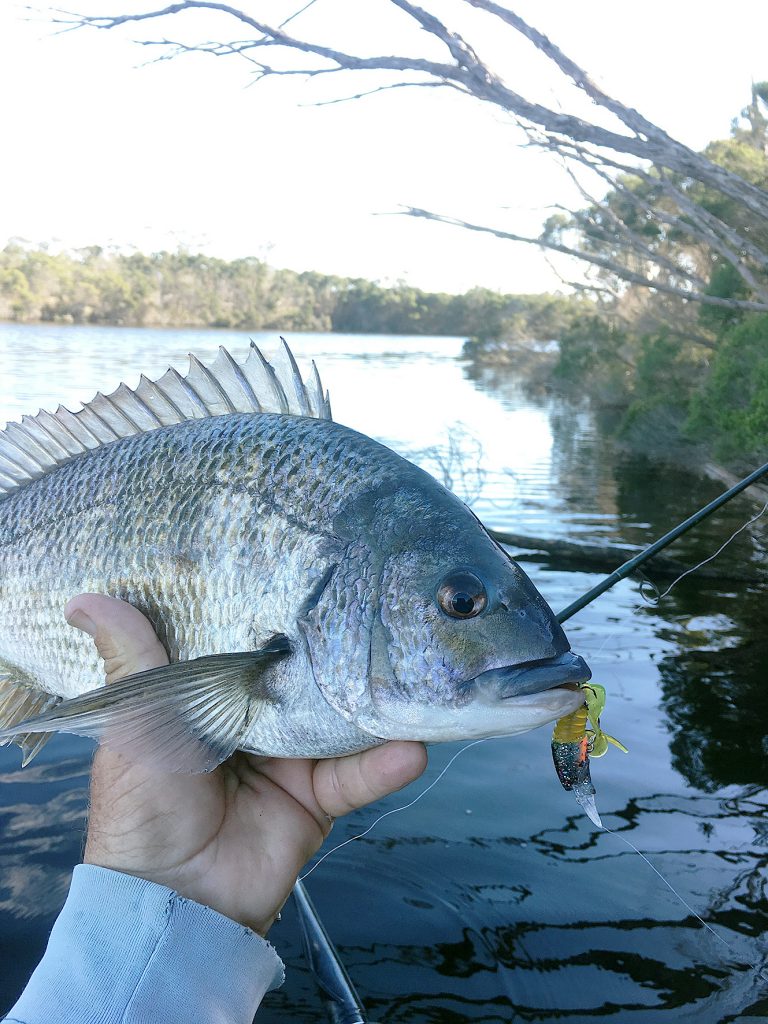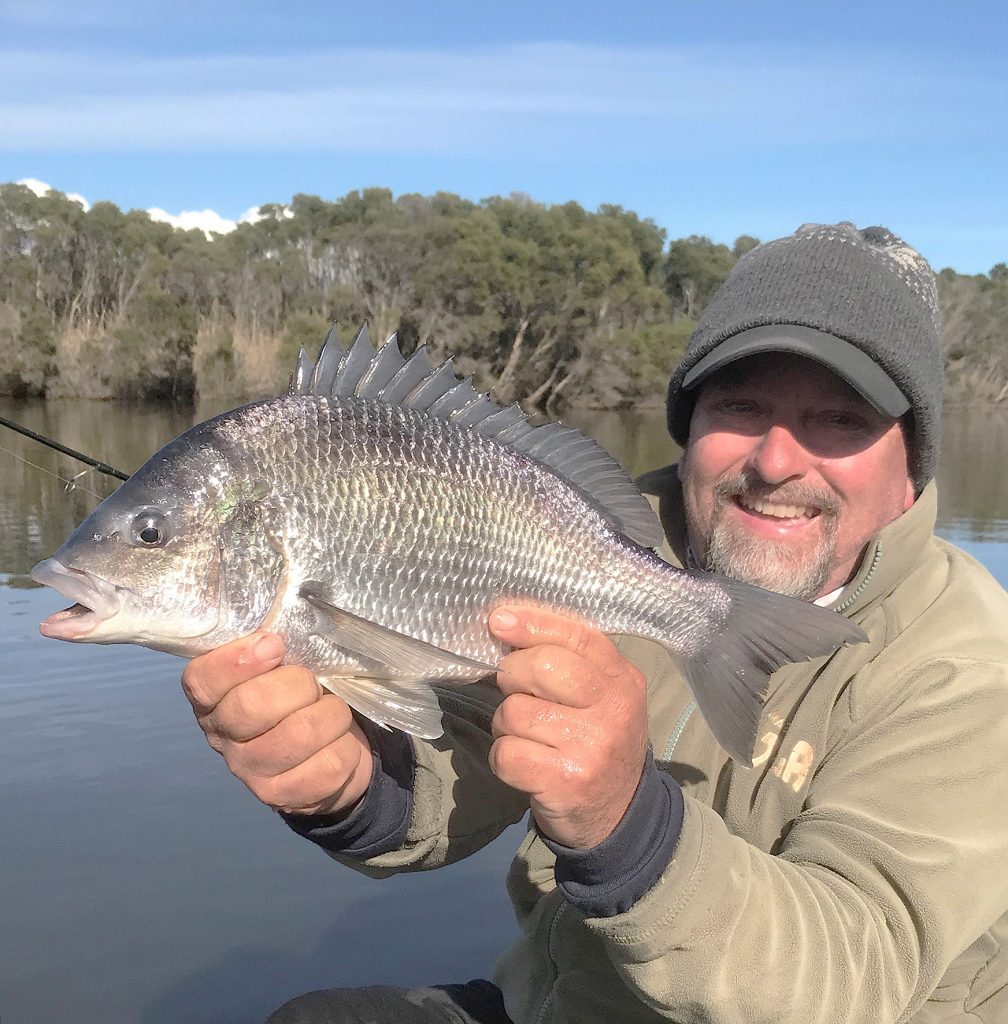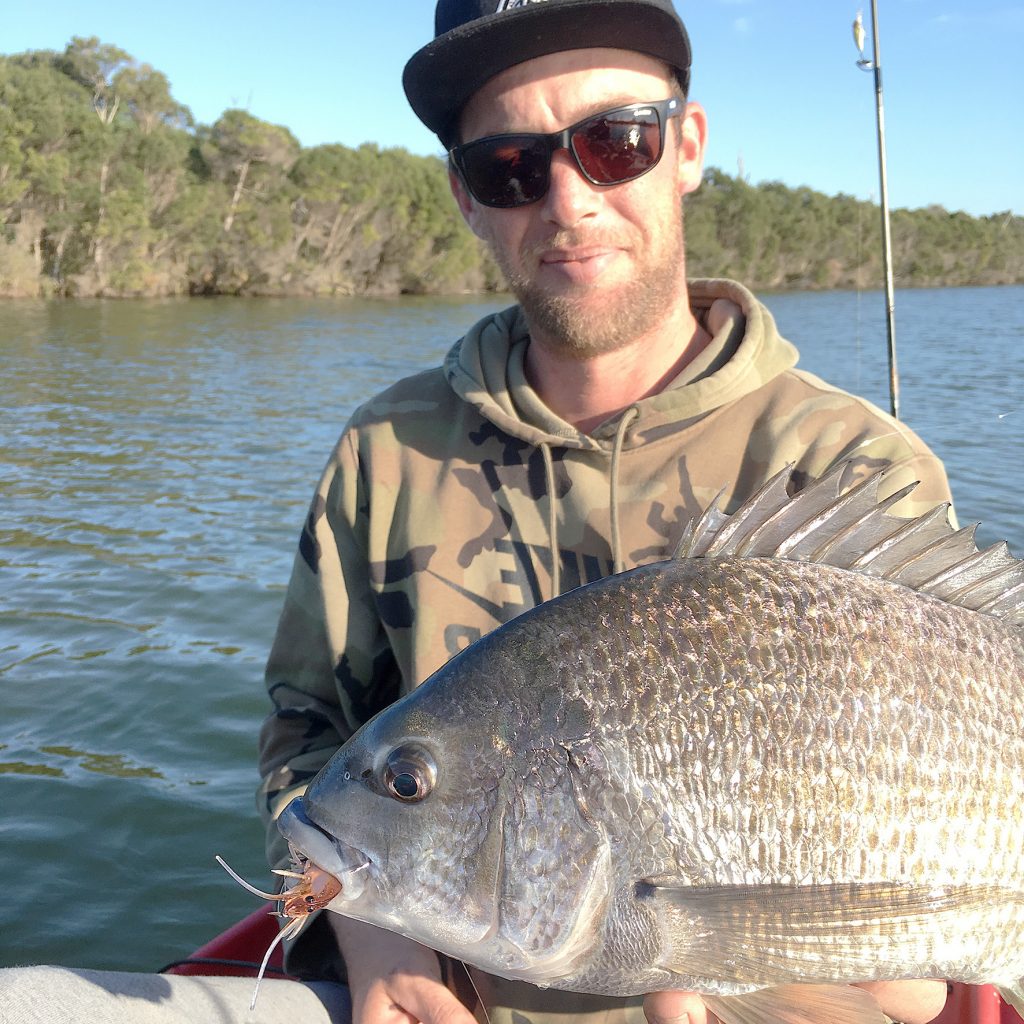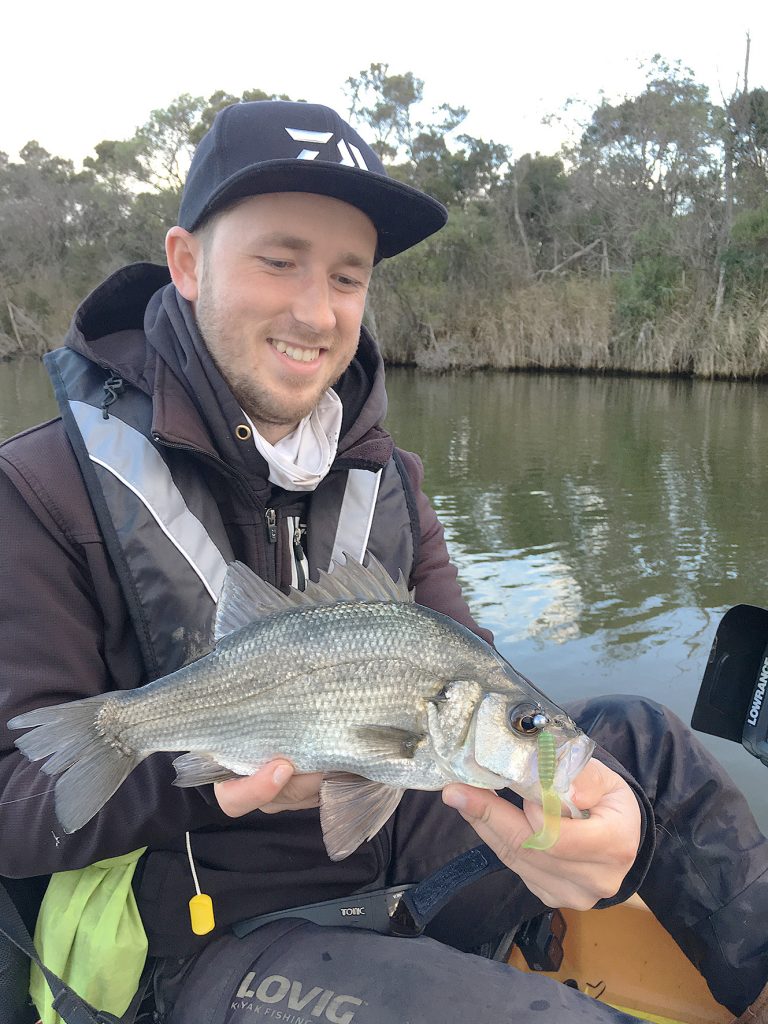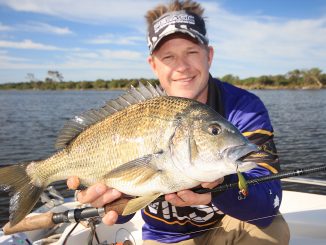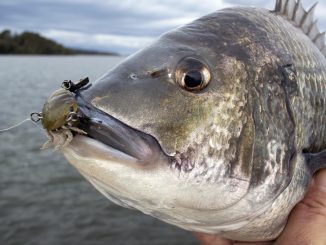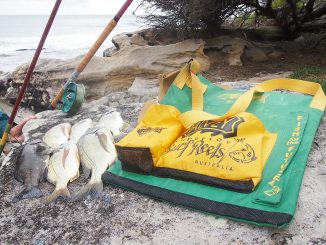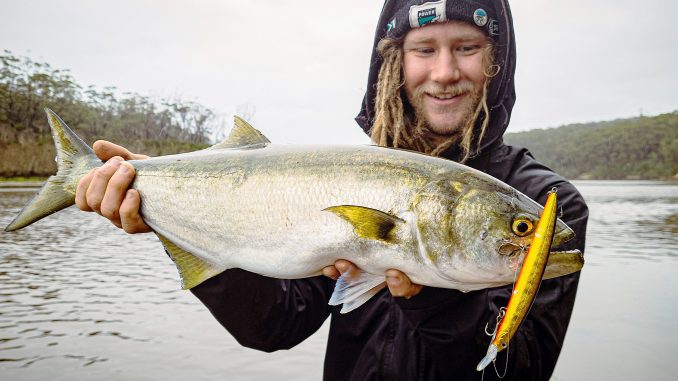
• Brett Geddes (first published December 2021)
All anglers have endured the frustration and despair of losing a fish to a busted leader. The culprit is typically assumed to be the snaggy, weedy or rock-strewn environment where many fish live.
However, many anglers are breaking off fish for no other reason than using super light leaders, because they believe it’s essential. I’ve decided to turn this view totally upside down, with the aid of disciplined, rigorous testing and proof from myself and fellow anglers.
When I was new to lure fishing many years ago, I fished heavy, tough leaders. Being so green back then, I really didn’t know any different; I thought everyone used those methods. Right from day one my very first luring efforts always involved using mono of at least 5kg. That ultimately progressed to 8kg at times when large bream, bass and estuary perch were continually lost to shreddings in the local timber. At least with 8kg I could lay enough stick on the bigger fish for speedy snag extraction, and I also had the benefit of greater resistance against the line popping and barnacle-wrapped structure. I landed more by-catch too, like thumping flathead, salmon and toothy tailor.
Sure, I had (and still do have) a few fish shred me in an instant, and others brick me deep into structure, but I suspect that even 10kg line would hardly improve those encounters.
These days I seem to be getting more frustrated that a lot anglers are complaining of busting off fish, and quite possibly for reasons easily fixed.
Blind faith
Most anglers get lazy and fall into repetitive habits and follow the latest cult fad. I’ve been guilty of this too, and if I ever break the rules, it is only to prove those trends right. So I will try crazy and weird techniques or trial homemade lures and investigate all sorts of lines and leaders.
As you’d expect, there have been failures, but also plenty of surprising wins.
These days there’s a fixed obsession for anglers to fish super light leaders when luring bream. But I also find it carries over to other species like bass, estuary perch, trout, snapper and even flathead or Australian salmon. Look, I know that big bream can be landed on even 1lb leaders with a little skill and a drag set right, and I’ve caught plenty of big fish on light leaders when I’ve experimented with them. However, tying lures onto 1-2kg leaders puts a lot of trust in fine lines that really aren’t made for landing 1.5kg bream that live around snags, jetty pylons or other structure. I won’t even talk about how a rarely a trophy 2kg bream will ever reach a landing net when fishing so light.
Over the last five or so years I’ve made a point of quizzing all the anglers I know or meet for the first time, about what leaders they use and why. Nowadays, nearly everyone has said they employ the lightest leader possible because “they have to” or it’s what we all do to beat spooky and fussy fish, “all anglers know that!”.
I get the fact that when you first take up fishing you have to start somewhere, and following mates or the gun anglers in the media and competition winners is a smart move. After all, they have the experience and have done all the homework, right?
Wrong! I’ve now discovered that nearly every one of the very best anglers I know have never experimented with much stronger leader sizes. I always ask anglers how the hell can you say heavy leaders from 4-8kg won’t ever work when you’ve never tried them? Some anglers even believe that 6lb leaders will seriously hinder their success rate.
Is light fantastic?
We all hear and read about how anglers swear by using light leaders, and say catch rates improve when fishing light, and often praise a light main line or braid as well. I acknowledge that these gun anglers catch ripper fish, but I don’t respect what they declare to be ‘fact’ when they have no proof.
So why do I only use 4-6kg leaders, you ask? I often get quizzed more on how it can be done! I find it bizarre that nearly all bream anglers think it’s near impossible to hook fish on 5kg+ leaders. I understand that when you catch your very first 20-30cm bream or maybe bass, estuary perch even flathead all on very light leaders, it’s hard to make a change. We are creatures of habit, and at times for very good reason. When a lure, location, retrieve method or indeed a type of fishing line all produce fish, why fix something that ain’t broken?
I’ll never claim to be a gun angler but the one thing I’m very good at and always happy to share is the result of my constant experimentation. With that in mind, in this article I want to give you concrete proof that heavier leaders work. More on that soon. First, let’s look at how this all began.
Heavy beginnings
My initial lightbulb moment of using much stronger leaders happened when I was fly fishing. Over a period of 10 years, in the early 1990s, well before I ever tied on my first hardbody or soft plastic lure, I was totally fixated on fly fishing, mostly for trout. Of course, I started with traditional super fine lines. In fact, I used commercial tapered leaders down to even 1-2lb breaking strain. They are about 10ft long and start off at around 20lb diameter, graduating down to very fine ends. This allows the energy from the fly line to transfer as efficiently as possible through the leader and tippet in order to straighten out light flies for the best presentation.
In the early days, I broke these leaders mostly on tree branches, grass tussocks and rocks (rarely on fish!) with hack false casting while trying to learn the trade. So my tapered leaders nearly always shortened up rather quickly and therefore when I eventually caught a ‘fussy’ trout, it was on a 6lb or even 8lb leader. Eventually I got better and hooked trout on 2lb tippets, but busted so many fish off.
Eventually I discovered I could catch all my trout on around 6lb leaders and often even up to 10lb. You can see how this discovery directly transferred into my very first lure fishing forays.
Hard line facts
So from day one I lure fished, in the view of most anglers, very heavy leaders. I can hear everyone wanting to tell me that my methods will cost me a lot of fish, and specifically bream. Maybe so, but I’ve come to appreciate it’s very difficult and even sometimes impossible to prove or measure the results. I’m talking about 20-odd years of me always avoiding light leaders. Over that time I have turned most of my fishing mates towards much stronger leaders because they have fished with me and seen the merit of my results. All of them now rarely, if ever, go lighter than 8lb and often up to 14lb leaders.
Yes, there are some people I’ll never turn, and a rare few angling partners simply refuse to accept or become confident using my methods. However, while on the water with those same guys, I have never begged for a length of their much finer leader material if they catch more than I do. I sometimes get out-fished by mates, probably because they are just superior anglers with better techniques or lures. However, I never notice me having inferior hook-up rates. The only obvious outcome between us is that generally speaking, I don’t lose fish or lures to line breakage. Sometimes I even get the higher score for the day, because I get the fish in and released much quicker and get re-casting again within minutes.
Most notably, I often land those very big fish that could break finer lines.
It’s fair to say most anglers lose a lot of gear due to fishing light. This is a huge benefit to lure makers and it stands to reason that brand representatives will always push for fishing as light as possible! Why is it we think fish see leaders as a ‘threat’ yet we don’t give a second thought to what fish think about hooks? I mean, hardbodies have two trebles with six menacing sharp hooks on them, yet fish don’t see these as any sort of danger? Not to mention the actual lure that looks and behaves like nothing they’ve ever seen! Yet those same fish are put off by a harmless leader that behaves and looks nothing like a predator?
I think the truth lies in the fact that fish are very opportunistic feeders, and if something moves like food they’ll eat it. Despite what we have dreamed up in our heads about colour, action, leaders, hooks and even scent, these factors can have very little to do with a fish eating a lure or not. Other factors like an angler’s lure technique or even how hungry a fish is, are probably far more important. I just think we are all very lucky that fish are willing to eat a totally foreign looking and behaving object.
Experimenting light
About four years ago I got paranoid. With a constant barrage from so many anglers about my ‘dubious’ techniques, they all said it’s time I caught more fish and join the ‘more successful’ light leader party. To prove them right or wrong, I had to ditch my firm beliefs, so for nearly one year I went light. Not just for a couple of days or a few trips but for months on end, which turned into over 100 outings. In fishing, just like science, persistent repetition is fundamental to test the hypothesis.
I used 4lb leaders nearly exclusively, a few times 6lb in really heavy snags and even 2lb at times in open, snag-free waters. The first thing I expected was to actually land a lot of big fish, and to a large degree that was correct. Did I bust a few off as well? I sure did, and although not that many, it was still very annoying. I found I had to be ever so careful during every fight, with constant drag adjustments, swearing and lengthy, nervous battles. Most people would argue that it’s all part of enjoying the fight, even if the fish that eventually hit my net were a lot more fatigued.
But here’s the funny part. While I spent all those months going light, my mates laughed at and refused to join me and stayed with mostly 10-14lb leaders. Slowly but surely, over more than 50 trips, it became obvious I was not catching more fish than them, losing a lot of lures to the snags and at times I was avoiding deep fish-holding structure like jetty pylons and tree logs.
It appeared the benefits of a light leader were busted, but maybe that was due to me just being a hack angler. So I pushed on across many species including, bream, bass, EP and flathead, and figured that the proof would eventually emerge: surely lighter leaders would work better?
After about 11 months I decided I’d had enough. At least give me credit for perseverance and devotion to the cause (something I see other anglers refuse to have when they try my heavy leader theory). At the end of my experiment, the only thing to report on was there was no benefit in number or sizes of fish I caught. I lost more to bust-offs but not as many I thought I would. Fishing snags produced the worst results, and I started avoiding them in the end to save losing valuable lures.
Did I discover certain areas, or weather conditions, or even species were jumping on the light leader set-ups? Not at all.
Look, if I thought going really light would land me more and bigger fish I’d go as light as possible. I’m not going to sacrifice catching fish just to prove my theory right. Maybe it’s about time you tried higher breaking strain leaders to prove me wrong! I actually believe you will see the benefits and have a win. If you don’t believe me, at the very least dedicate a few sessions to experimenting with heavier lines.
Fish welfare
My passion for this subject is not all about catching more or bigger bream, it’s mostly about looking after the fish. If you do try fishing heavier during your next session and things get quiet or you have a tough time hooking fish, don’t do the obvious and blame the heavier leader. It’s more likely other factors are involved. Have faith and persist. I can’t stress enough that you’ll be surprised and maybe even shocked to see your hook-up rates remain the same or better. If you’re game, put it into practice and watch the trophy fish hit the net more often and the local tackle shop curse you for not losing more lures!
I now also realise that my released fish also benefit from my tough leaders and stronger main line. This brings me to the main reason I refuse to fish light. I think we owe greater respect toward the fish. The goal is to get ‘em in quick and release ‘em quick, then watch them swim off healthy and fit.
Some people say you “have to give the fish a chance” during the fight, but I find that comment thoughtless and irresponsible. I see no joy in hooking a fish and have it snap me off because the leader was not up to strength. That’s not sport, it’s just ridiculous. A lot of anglers will recount with proud excitement how a procession of big fish kept smashing them off and how there was no hope of turning them. They almost pride themselves in doing half a dozen hardbodies or running out of plastics. Does anyone think about what is going on with all these fish swimming around with hooks stuck in their gob? Sometimes the trebles lock their mouths closed. And then there’s the 3m of line the fish might have to drag around for a month or more.
It seems most anglers refuse to worry about what they can’t see, or as I often hear – “Ahhh well, he will lose that lure soon enough”. It is absolute crap that all fish get rid of hooks or lures in just a few hours or days. Some people still believe hooks dissolve overnight! I shudder to think what happens to all the line when an angler gets partly spooled, due to a drag set for very light line. All this for a bit of so-called sport.
In a world where we are so careful and thoughtful about releasing fish in the best condition we can, all this gets thrown out the window when we ‘release’ them due to those fish busting us off. I don’t want to go totally overboard here, because I still lose fish to shreddings, toothy fish biting through line or maybe a rare failed knot, that’s inevitable. All I’m saying is, maybe we can all at least drastically minimise losing fish by simply upgrading our line class.
I can hear a lot of anglers moaning and saying their catch rates would plummet. How do you know, if you don’t give it a fair dinkum go?
Join the club
Surprisingly, I’m now bumping into anglers who are actually fully converted into using 10lb and 12lb leaders and getting remarkable benefits. Quite a few of them have heard my interviews with Greg Vinall on the Doc Lures Podcast, and what a joy to see technology working a treat. I’ve done four interviews with Greg now and he tells me some of our podcasts are getting over 100 hits a week.
Ben Hotchkin and his brother Tyler are two of the most recent anglers I’ve met up with, and they inspired me to write this article. They fished light leaders only because of influential trends, and let’s face it, you have to start somewhere. After listening to the podcast, Ben says he swears going heavier has produced only positive results after many trips now. And all the time the fish are also having a win.
My final word on this subject is that most fish are complex critters; on some days they will eat lures without hesitation, or take them just some of the time, totally ignore lures or even spook hopelessly to the exact same presentation. It’s human nature to blame the things we can change, like leaders, rather than acknowledging the things we can’t change.

